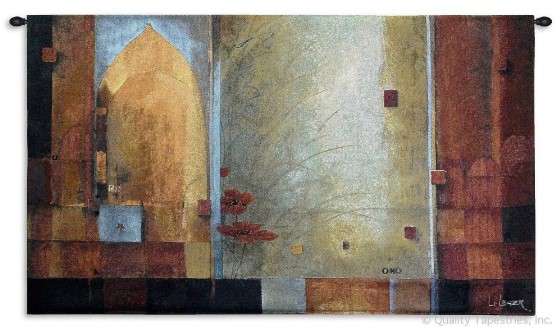A wall tapestry is more than just a piece of fabric; it’s a statement piece that can transform any space. Whether you’re looking to add warmth, texture, or a cultural touch to your home, choosing the right material is crucial. The three most common tapestry fabrics—cotton, polyester, and woven blends—each offer unique benefits and drawbacks. But which one stands out as the best choice? Let's explore these materials in-depth and determine which one makes an ideal huge wall tapestry for your aesthetic and practical needs.
Cotton Tapestries: Soft and Natural, But Are They the Best?
Cotton is a widely popular choice for tapestries, thanks to its natural feel and lightweight nature. A large cotton wall tapestry often drapes beautifully and feels soft to the touch, making it an appealing choice for those who prefer organic materials in their home decor.
Pros of Cotton Tapestries:
Soft and Breathable: Cotton is a natural fiber, making it breathable and pleasant to touch.
Eco-Friendly: Being biodegradable and often sourced sustainably, cotton is a great option for environmentally conscious buyers.
Lightweight & Easy to Hang: Cotton tapestries are easy to mount on walls with minimal hardware, making them renter-friendly.
Machine-Washable: Unlike some woven options, cotton tapestries are generally easy to clean.
Cons of Cotton Tapestries:
Prone to Wrinkles: Cotton creases easily, which can make a wall tapestry look less refined unless properly ironed or steamed.
Less Durable Over Time: Frequent washing or exposure to direct sunlight can cause fading and fiber wear.
Lack of Texture: While cotton tapestries come in various prints, they often lack the intricate woven texture that enhances visual depth.
Polyester Tapestries: Affordable and Vibrant, But Missing Character?
Polyester is a synthetic material that has gained popularity in home decor due to its affordability and resistance to wear. Polyester might catch your eye if you're looking for budget-friendly large tapestries that offer vivid colors.
Pros of Polyester Tapestries:
Highly Affordable: Polyester is often the most budget-friendly option for tapestries.
Vivid Colors: The synthetic nature of polyester allows for bright, long-lasting prints that don’t fade easily.
Wrinkle-Resistant: Unlike cotton, polyester resists creases, so your tapestry always looks smooth.
Lightweight & Easy to Clean: It’s generally stain-resistant and can be easily machine-washed.
Cons of Polyester Tapestries:
Synthetic Feel: Polyester doesn’t offer the same natural, high-quality texture as cotton or woven fabrics.
Lacks Breathability: Unlike cotton, polyester can trap heat, making it less ideal in warmer environments.
Can Look Cheap: While some polyester tapestries mimic natural fibers well, many can look artificial up close.
Woven Tapestries: The Premium Choice for Timeless Elegance
Woven tapestries are the ultimate choice for those who value artistry, craftsmanship, and long-lasting quality. A large wall tapestry made from woven fibers exudes depth and texture, turning any wall into a stunning focal point.
Pros of Woven Tapestries:
Luxurious Texture: Woven tapestries add an artistic, handcrafted feel that printed fabrics cannot replicate.
Durability: These tapestries are built to last for years—even decades—without losing their charm.
Historical & Cultural Significance: Woven tapestries have been used in castles, cathedrals, and royal palaces for centuries, making them a sophisticated addition to any home.
Enhanced Visual Appeal: Unlike printed polyester or cotton, woven tapestries use intricate patterns and depth, giving the artwork a more authentic and dimensional look.
Great for Insulation & Acoustics: Due to their thick texture, woven tapestries can help absorb sound and insulate walls, making them ideal for large, echo-prone spaces.
Cons of Woven Tapestries:
More Expensive: Woven tapestries often come at a higher price point due to their craftsmanship and material quality.
Heavier & Requires Sturdy Mounting: Woven tapestries may need a strong hanging method, such as rods or brackets, unlike lightweight polyester or cotton.
More Challenging to Clean: Because of their intricate weave, they are not always machine-washable and may require dry cleaning or gentle handwashing.
Final Verdict
Each material has its strengths, but if you’re looking for large wall tapestries that offer a combination of elegance, durability, and timeless appeal, woven tapestries stand out as the best choice. Their rich texture, artistic craftsmanship, and ability to transform any space into a masterpiece make them well worth the investment.





Comments